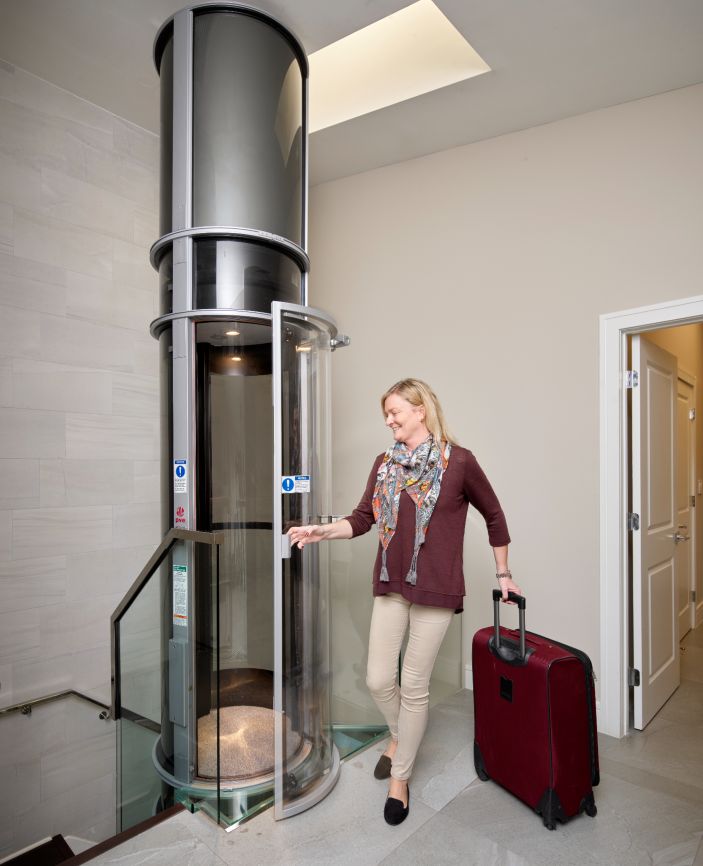Looking Into the Globe of Lifts: Typical Issues Encountered by Different Lift Systems
As we browse via the upright transport systems of contemporary structures, elevators attract attention as an essential component of our day-to-days live. However, behind their smooth operation exists a world of elaborate systems that can sometimes run into challenges. From hydraulic elevators to grip systems and machine-room-less styles, each lift type features its set of usual concerns. Comprehending these obstacles is critical for ensuring the smooth functioning of these crucial systems. Let's explore the intricacies that underlie the operation of elevators and the potential problems that can emerge, dropping light on the detailed web of lift systems.
Hydraulic Elevators
Hydraulic elevators, usually chosen for low-rise structures, utilize fluid pressure to manage the activity of the elevator cars and truck (lift repair companies). This device involves a hydraulic pump pressing oil right into a cyndrical tube, triggering the elevator to move in the desired instructions. While hydraulic lifts are recognized for their smooth and silent procedure, they do feature their own collection of usual issues
One common issue with hydraulic elevators is oil leak. Furthermore, issues with the control system, such as faulty shutoffs or a malfunctioning pump, can trigger interruptions in the lift's motion.
Normal upkeep and timely repair work are vital to make sure the smooth functioning of hydraulic elevators. By resolving these common concerns proactively, structure owners can minimize downtime and make certain the safety and security and performance of their upright transportation system.
Grip Elevators
When considering upright transportation systems in buildings, one more common kind aside from hydraulic lifts is the traction lift. Grip lifts operate making use of a system of ropes and counterweights that relocate the elevator car by clutching onto the hoist ropes. This system permits smoother and much faster vertical transport compared to hydraulic systems.
Among the typical issues dealt with by traction elevators is rope wear. The constant motion of the ropes within the grip system can lead to damage over time, potentially creating the elevator to breakdown or become hazardous for usage. Regular examinations and maintenance of the ropes are important to guarantee the lift's correct functioning and safety and security.
Another problem that grip elevators may run into is associated with the control system. Troubles with the control system can lead to problems such as irregular movement, delays in feedback times, or even total closures. Regular testing and maintenance of the control system are critical to stop such issues and guarantee the lift's reliability.
Machine-Room-Less (MRL) Elevators

Among the essential components of MRL lifts is the small gearless grip device that is mounted within the hoistway. This device efficiently drives the lift automobile without the need for large devices found in typical traction lifts. Furthermore, MRL lifts generally make use of a counterweight system to balance the auto, further boosting their energy effectiveness.
Despite their advantages, MRL lifts might face challenges associated with upkeep and repair as a result of the confined area for devices installment. Ease of access for servicing elements within the shaft can be article source restricted, needing specialized training for technicians. Correct maintenance routines and normal inspections are vital to make certain the continued smooth operation of MRL lifts.
Overloading and Weight Limit Issues
Are elevators geared up to deal with excess weight tons effectively and safely? Overwhelming and weight limitation problems are essential concerns in lift procedures. Lift suppliers layout raises with certain weight capabilities to guarantee passenger safety and security and equipment durability. Surpassing these weight limitations can lead to various troubles, consisting of mechanical failings, hold-ups, and security risks.
When elevators are overloaded, it puts extreme stress on the motor, cables, and other components, possibly causing malfunctions or malfunctions. Safety and security systems such as sensors and overload sensing units are in area to avoid elevators from relocating if they find excess weight. Furthermore, exceeding weight limitations can lead to boosted energy consumption and damage on the elevator system.
To minimize overwhelming concerns, constructing managers need to plainly show weight restrictions in elevators and enlighten occupants on the relevance of adhering to these limitations - lift repair companies. Normal maintenance checks by certified service technicians can also assist make certain that elevators are operating within safe weight specifications. By dealing with overloading and weight limit issues proactively, structure proprietors can enhance elevator security and efficiency
Electrical System Failures
Going beyond weight limits in elevators can not only cause mechanical concerns but likewise possibly contribute to electrical system failings within the lift framework. Electric system failures are a vital worry in lift procedure, as they can create unforeseen closures, breakdowns, and even safety risks. One typical check that electrical problem is check my blog the getting too hot of parts because of excessive current circulation brought on by straining the elevator beyond its capacity. This can cause harm to the motor, control, or wiring systems, resulting in costly repairs and downtime.
Normal maintenance and inspections are critical to determine and resolve possible electrical concerns promptly, making certain the safe and reliable procedure of lift systems. By adhering to weight limitations and conducting routine electric system checks, structure owners can alleviate the risk of electrical failings in lifts.
Conclusion

Hydraulic elevators, often liked for low-rise buildings, utilize fluid stress to control the activity of the elevator cars and truck.When thinking about upright transportation systems in structures, another typical type apart from hydraulic elevators is the traction lift. Traction elevators run using a system of ropes and weights that move the lift automobile by gripping onto the hoist ropes. Unlike standard lifts that require a separate equipment room to house the devices, MRL lifts integrate most of the parts within the shaft, removing the need for a devoted machine space.In final thought, elevators deal with typical issues such as hydraulic malfunctions, traction system failings, and electric system troubles.